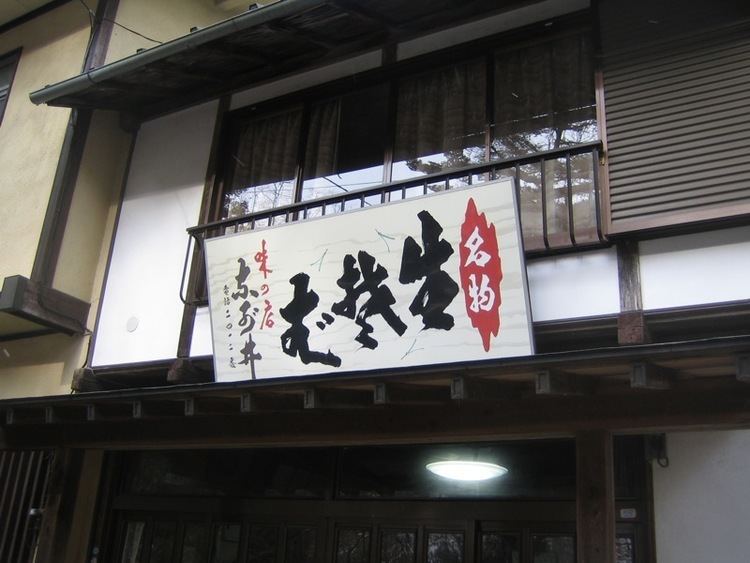Sister systems Katakana, Hiragana | Direction Left-to-right | |
 | ||
Time period c. 800 – 1900 CE; minor use at present Parent systems Oracle Bone ScriptSeal ScriptClerical ScriptRegular script (kanji)Man'yōganaHentaigana変体仮名 | ||
In the Japanese writing system, hentaigana (変体仮名, "variant kana") are obsolete or nonstandard hiragana. They include both stylistic variants of current hiragana and distinct alternative hiragana characters. Today, with a few exceptions, there is only one hiragana for each of the fifty consonant–vowel sequences (moras) in Japanese. However, traditionally there were generally several more-or-less interchangeable hiragana for each. A 1900 script reform ordained that only one selected character be used for each mora, with the rest deemed hentaigana. Although not normally used in publication, hentaigana are still used in shop signs and brand names to create a traditional or antiquated air.
Contents
Hiragana originate in man'yōgana, a system where kanji were used to write sounds without regard to their meaning. There was more than one kanji that could be used equivalently for each syllable (at the time, a syllable was a mora). Over time the man'yōgana was reduced to a cursive form, the hiragana. Many hentaigana derive from different kanji from the ones for the now-standard hiragana, but some are the result of different styles of cursive writing. As hentaigana have derived from man'yōgana, there are hundreds of different hentaigana used to represent only 90 morae of the Japanese language.
On the other hand, katakana do not have hentaigana. Katakana's choices of man'yōgana segments had stabilized early on and established – with few exceptions – an unambiguous phonemic orthography (one symbol per sound) long before the 1900 script regularization.
Hentaigana are not currently included in Unicode, although they have been accepted for Unicode 10.0, which is scheduled to be released in June 2017.
Development of the hiragana syllabic n
The hiragana syllabic n (ん) derives from a cursive form of the character 无, and originally signified /mu͍/, the same as む. The spelling reform of 1900 separated the two uses, declaring that む could only be used for /mu͍/ and ん could only be used for syllable-final /ɴ/. Previously, in the absence of a character for the syllable-final /ɴ/, the sound was spelled (but not pronounced) identically to /mu͍/, and readers had to rely on context to determine what was intended. This ambiguity has led to some modern expressions based on what are, in effect, spelling pronunciations. For example, iwan to suru "trying to say" is ultimately a reading of mu as n. (The modern Japanese form 言おう iō comes from earlier 言はむ ihamu. Many other changes are seen here as well.)
Modern usage
Hentaigana are considered obsolete, but a few marginal uses remain. For example, the word otemoto is written in hentaigana on some chopsticks, many soba shops use hentaigana to spell kisoba on their signs. (See also: "Ye Olde" for "the old" on English signs.)
Hentaigana are used in some formal handwritten documents, particularly in certificates issued by classical Japanese cultural groups (e.g., martial art schools, etiquette schools, religious study groups, etc.). Also, they are occasionally used in reproductions of classic Japanese texts, akin to the use of blackletter in English and other Germanic languages to give an archaic flair. Modern poems may be composed and printed in hentaigana for visual effect.
However, most Japanese people are unable to read hentaigana nowadays, only recognizing a few from their common use in shop signs, or figuring them out from context.
Incomplete list
Some of the following hentaigana are cursive forms of the same kanji as their standard hiragana counterparts, but simplified differently. Others descend from unrelated kanji that represent the same sound.
Sources of hentaigana
Hentaigana are adapted from the reduced and cursive forms of the following man’yōgana (kanji) characters. Source characters for the kana are not repeated below for hentaigana even when there are alternative glyphs; some uncertain.
